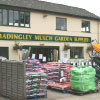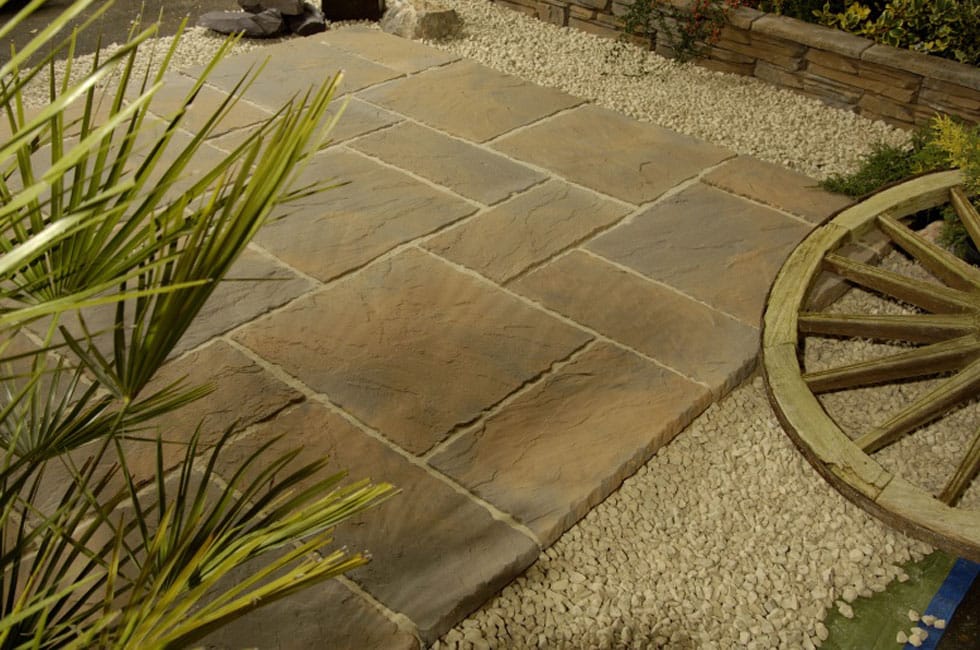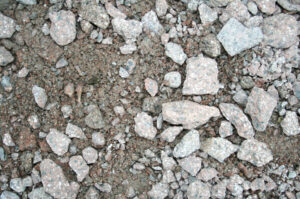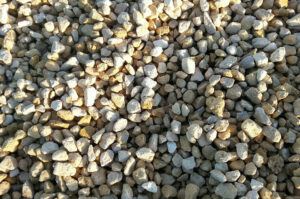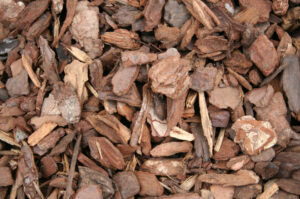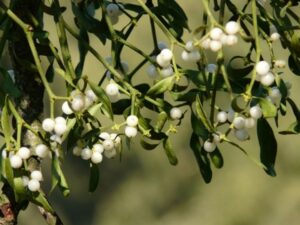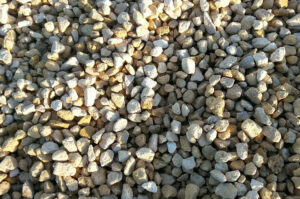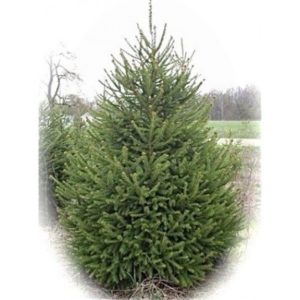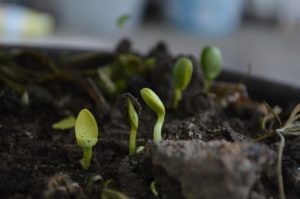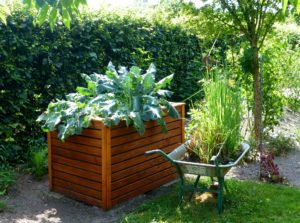Key Uses for Sand in Your Garden
Sand isn’t just something that you find on beaches, it can be an essential tool for improving your garden. Here Madingley Mulch, who supply bags of sand to customers in Essex, Suffolk and our home county of Cambridgeshire, outline some of its most important horticultural uses.
For a Play Area
Your children can use a special mixture in their play area or sand pit. This sand tends to be much finer with fewer large items than regular ‘building’ sand.
The benefits of having a sandpit are well-known for children’s physical and mental health. It keeps them active, improves their hand-eye co-ordination, and shouldn’t get them too dirty. At Madingley Mulch, we supply children’s play sand which is free of stones and doesn’t stain.
Warning – don’t be tempted to spread children’s play sand on your plants, as this could harm them. This is because it is a different mixture to regular sand that usually has a higher salt content.
As a Building Base
Sand is a good base if you are laying paving stones or patio slabs. The reason is that it can hold just as firmly as cement, while still draining well, meaning that rain can easily escape through the slabs and into the soil.
It can also be used for screeding, a method of constructing a well-profiled bedding layer where flags or bricks or any other regular thickness paving slabs can be directly laid onto it with no need for any further levelling. It can also help if you need to render your garden wall.
At Madingley Mulch, we supply sharp sand, which is also known as building sand, which is ideal for bedding paving stones and patio slabs, as well as for external and floor screeding and external rendering. We also stock soft sand, which is great for mixing mortar to lay stone slabs or bricks. In addition, you can buy paving slabs from Madingley too.
As a Lawn Improver
Sprinkling some sharp or building sand over your lawn can work wonders for the grass, particularly if it’s already in poor condition. This is because it kills and prevents moss, and also improves drainage and air circulation.
This sand works particularly well on heavy clay soils such as those found in East Anglia, where the density of the soil means it can be difficult for the grass roots to grow healthily unless some sand is added. For more information on soil types, check out our previous blog here.
Don’t just sprinkle the sand onto the grass its own, as it is more effective when used as part of a wider lawn top dressing mix that also contains soil, peat and loam – and which we also supply at our site on the outskirts of Cambridge. You can also use sand underneath your lawn as part of a soil/sand mix, which is a good base for either turf or grass seed.
In both cases, results won’t be instant, but you should notice a marked improvement in the quality of your grass over time.
Bags of Sand in Essex from Madingley Mulch
If you have any questions about which type of sand is best for your garden project, give us a call on 01954 212144 and we’ll be happy to help.
We can supply your order to you in bulk bags, small bags or weighbridge collection. The minimum order for delivery is now £50. We have also introduced a new sliding scale based on the delivery distance, full details of which can be found on our delivery page. But don’t worry, we are still delivering to all the destinations we used to, including St Ives, St Neots, Newmarket, Royston and further afield.
And don’t forget to check out our offers section because we have some great seasonal bargains.
Which Garden Design is Best – Straight or Curved?
The average UK garden is 188 square metres in size, according to the website Garden Patch. While the actual size may vary depending on where you live, the likelihood is that it will be either square or rectangular. However, do you need to stick to such a regimented shape when it comes to your garden design?
Madingley Mulch provide paving slabs to customers in Bedfordshire, Hertfordshire, Essex and our home county of Cambridgeshire. Here we look at the advantages offered by both straight lines and curves (particularly when it comes to patios), and how we can help with your garden landscaping needs, whatever design you end up choosing.
Championing Curves
One way of making sure you don’t end up with too regimented a shape is to ensure curves are an integral feature of the garden. This is because they can create an illusion of space, making the garden appear bigger than it really is and also less exposed. Curves also add an air of mystery to a garden, such as a winding path around a corner that poses the question – where does it go?
How to Achieve It
If you are digging out a bed, border or patio, use a piece of hose laid in the desired shape as a guide before getting the spade out.
In planting terms, avoid shrubs that are likely to grow more vigorously outwards, as these could lose the definition achieved, and make a small space feel even smaller. Also, landscape designers tend to add kidney or teardrop shapes to lawns to break up the natural block effect if they are left completely square. Edging stones will help add greater definition between paved and planted areas too.
It Can Still be Hip to be Square
Using straight lines can still be the simplest and most cost-effective way of gardening. This is because you can stick to the natural contours and shapes of your garden, saving the need to spend so long digging things out. It will also give you a classic design that is both contemporary and timeless. And remember, you can add extra interest by making your garden tiered or split-level, or by using raised beds.
How to Keep Everything Straightforward
If you are digging out a lawn or flower bed, use string or twine stretched between two points to ensure you keep to a straight line. The same applies to patios, although you don’t need to have one mass block of slabs. You can leave spaces for pots and planters; and our Indian sandstone paving slabs, which we supply to customers in Suffolk, Essex, Herts, Bedfordshire and Cambridgeshire, also come in a choice of four different colours.
You can also create separate zones, such as a children’s play area, or an area where the garden can grow wild. You can garden upwards as well with the help of trailing plants that grow up or through trellises and fences.
It Needn’t Be One of the Other
You can also mix the two styles, for instance, square and round beds provide an interesting contrast. The formality of square or rectangular beds can be offset by putting soft, billowing plants such as ornamental grasses in them. Additionally, you shouldn’t overdo the curves either, as adding lots of small curves to a border or bed can ruin the overall effect and be more time-consuming to dig out. Ideally, you need a smooth, uninterrupted curve.
Paving Slabs in Bedfordshire with Madingley Mulch
Regardless of whether you opt for a curved or square garden design, at Madingley Mulch, we will be happy to help you. You can call us on 01954 212144 or pop into our store on the edge of Cambridge to ask for advice and buy the supplies you need.
If you have a big order for paving slabs, either for a pathway or patio, we can deliver them straight to your door (minimum order £50). We have also introduced a new sliding scale for delivery charges. It’s £2 if the delivery address is up to five miles away from our base, up to £16 if the address is 30-40 miles away. We can also deliver further afield as well. For more information on our delivery charges, follow this link.
MOT Stone Types Explained
For most people, if they hear the phrase ‘MOT’, they think about the annual test your car has to pass in order to stay on the road. However, although the abbreviation may effectively be the same, it means something very different when it comes to stones and aggregates. Madingley Mulch provide Type 1 stone and hardcore to customers in Cambridge and further afield. Here we explain the finer (and coarser) points of the various stone gradings.
The MOT Part
As with cars, the MOT stands for Ministry of Transport (nowadays it’s known as the Department of Transport). Sometimes the MOT is omitted where it is clear that you are talking about stones and aggregates.
The reason it has the MOT prefix is because the stone has to adhere to certain standards for use on the roads (for example, the DOT’s specification for highway works). Type 1, in particular, is used in roads, pavements, car parks and other public areas, so it’s essential that it meets certain minimum safety standards.
Type 1, 2 or 3?
There are three types of MOT stones and aggregates:
Type 1 is a crushed aggregate often produced using materials such as limestone, gritstone, basalt, brick, concrete and hardcore. As well as its use in roads, pavements, car parks and other public areas, it can also be used in a variety of garden projects including sub-bases for patios, driveways and paths. It is usually between 0-40mm thick and is sometimes referred to as ‘hardcore’.
Type 2 is usually finer than Type 1 (being between 0-20mm thick) and is particularly suitable for driveways, pathways and walkways. This is because the size helps it to drain particularly well.
Type 3 is a coarser, more granular material (between 5mm and 40mm thick). It is typically used in road construction and as a base layer for other materials such as asphalt.
Type 1 Stone in Cambridge from Madingley Mulch
At Madingley Mulch, we supply MOT Type 1 (pictured above) in quantities of either 25kg or 800kg. And, as one of the leading aggregate suppliers in Cambridge, we also stock 20mm and 50mm limestone. The former consists of limestone chippings ranging in size from 20mm down to dust, which can be used as a final top layer for hardcores, while the latter is ideal for larger drainage projects.
For a complete list of all our aggregates we currently have in stock, follow this link.
Other Hardscaping Projects
At Madingley Mulch, we can help not just with the sub-bases for patios and driveways, but the materials to go on top of them as well. To check out our full selection of gravel (for paths and drives) and paving slabs and their prices, click here.
At the moment, delivery is between two and seven days from the time of your order. Following a period of severe inflationary pressure, we have now revised our arrangements to more accurately reflect the cost of delivering your order in what is the first change for more than two decades.
From the beginning of this month we are charging £2 per delivery unit for deliveries between 0-5 miles from our base near Cambridge; there is then a sliding scale of charges which increases the further away we have to deliver. (For deliveries between 5-10 miles away, the charge is £4; between 10-20 miles, it’s £8; between 20-30 miles it’s £12; and between 30-40 miles it will be £16). If the delivery address is more than 40 miles away then call us on 01954 212144 for an individual quote.
For the full list of revised charges, including the new minimum order levels, follow this link.
Why is Cotswold Stone so Good for Gardens?
One of the most popular types of decorative stone used in gardens across the UK is Cotswold gravel. Madingley Mulch supply Cotswold gravel to gardeners in Hertfordshire, Essex, Suffolk, and our home county of Cambridgeshire. Here we explain some of the reasons behind its popularity.
It’s Easy to Work With
Cotswold stone is a type of limestone that was formed when the area now known as the Cotswolds was covered by a warm sea. Layer after layer of shell fragments and skeletal remains of marine organisms built up on the seafloor, over time creating large beds of limestone across the area. Similar conditions can be found today in Florida and the Caribbean Sea.
Because Cotswold stone is porous due to its exposure to water, it is also easy to carve or break into smaller pieces such as chips or pebbles.
It’s Decorative
Another strong point of Cotswold stone is its colour. As the stone weathers its outward appearance can vary from golden, honey or pearl. This is down to the stone’s original composition, which varies depending on which part of the Cotswolds it comes from.
It is honey-coloured in the north, golden in the central Cotswolds and progressing to a pearly white in Bath in the south of the region. This means you have a choice of colours or can mix and match – whatever combination you opt for, it makes a decorative addition to your garden.
Cotswold stone does better if you pair it with plants that thrive in alkaline conditions (the limestone itself is alkaline). So campanula, clematis, lavender and geraniums will all thrive in a Cotswold gravel bed. It may be more difficult for plants such as rhododendrons, heathers, azaleas and hydrangeas to do well if in close contact with Cotswold stone because they do better in acidic conditions.
It’s Functional
Cotswold stone, because of its porosity, drains well, so it is a functional alternative to compost when it comes to your flower beds. It also acts as a good mulch because of its ability to suppress weeds and is particularly good in winter as it offers protection against frosts.
It can be laid to level out any uneven areas in your garden too, which helps if you have any children or pets. It’s good for security as well because you can lay it down on paths making it possible to hear any unwanted guests in your garden.
It’s Weather Resistant
It’s also used as a building material in houses and in dry stone walls, particularly in the Cotswolds. The fact that it has the ability to absorb and release water makes it more suitable, not less. This is because all walls need to have this ability otherwise there will be a build-up of moisture over time, weakening the overall structure.
At a smaller level, Cotswold gravel, due to its angular shape, will always lay flat. This helps to create an interlocking surface that will be solid and secure when used on a path or driveway. It’s also extremely hard-wearing and low-maintenance. The occasional wash-down with a hose during dry spells should be more than enough.
Cotswold Gravel in Hertfordshire from Madingley Mulch
We supply different types of Cotswold gravel to customers in Hertfordshire, Suffolk, Essex, Bedfordshire and Cambridgeshire. We stock Cotswold buff (the buff refers to the light brown/yellowish colour) as well as larger garden chips.
If you’d prefer something more organic to use as mulch, then we stock a range of soil conditioners at our base near Cambridge, including our exclusive products, Tony’s Tonic and Denise’s Delight.
We have now changed our delivery arrangements for the first time since 1999. The minimum order eligible for a delivery has increased from £40 to £50; and we have now introduced a sliding tariff of charges to reflect the cost of getting your order delivered (and the space it takes up on the lorry).
For instance, if your delivery address is between 0-5 miles from our base near Cambridge, then we will be charging £2 per delivery unit; for 5-10 miles, the charge is £4; between 10-20 miles, it’s £8; between 20-30 miles it’s £12; and between 30-40 miles it will be £16. If the delivery address is further than 40 miles away then call us on 01954 212144 for a tailored quotation.
We are defining a delivery unit as either a single bulk (½ or 1 cu m) bag or pack of paving slabs, or a group of other products (such as small bags of cement, tools, fencing products, etc) up to the value of £50 in total. More details about our revised delivery arrangements can be found here.
Top Tips on Alternatives to Peat-Based Compost
Amateur gardeners won’t be able to use any peat-based compost after 2024. Although it can help plants to flourish in poor growing conditions, the Government has decided that all domestic sales in the UK should be banned after that date.
Madingley Mulch are leading bark mulch suppliers in Hertfordshire, Essex, Suffolk and our home county of Cambridgeshire. Here we examine the reasons for the decision, and why many of our products are ideal if you want to switch to a different soil improver ahead of the ban.
The Reasons for the Ban
Peat is partially decomposed plant material and is one of the planet’s most effective storers of carbon. Whenever it is extracted from its natural habitat – most of the UK’s peatlands are in Scotland – then the carbon is released. This combines with oxygen in the atmosphere and is released as carbon dioxide.
The Government wants the UK to be ‘net zero’ when it comes to carbon emissions by the year 2050. Given that bagged compost accounts for 70% of all peat-based product sales in the UK, it was a natural target for a ban.
Peat extraction also damages the natural habitats of several different species (less than 15% of the UK’s peatlands are still in a natural or near-natural state). Hen harriers, skylarks, red grouse, meadow pipits and many other birds are all native to peatlands; in all cases their numbers are in decline. Extraction also negatively impacts the peat’s ability to prevent flooding and filter water.
Environment Minister Richard Benyon said, when announcing the ban: “This Government understands the importance of keeping peat healthy and in the ground, here and around the world – to lock up carbon, strengthen drought resilience and serve as a powerful nature-based solution to climate change.”
“The actions announced today mark a new chapter in the story of our iconic peatlands – safeguarding their long-term health and vitality as part of our commitments to achieve Net Zero and deliver our 25-Year Environment Plan.”
Peat Substitutes
So, what can gardeners use instead of peat? Here are a few suggestions.
Compost – Many composts don’t contain any peat at all and can still effectively store and release nutrients and water. Alternatively, you can grow your own compost.
Mulches – These can be effective as weed suppressants and help plants retain moisture. We stock a range of mulches, including decorative mulch which can also be used in play areas as well as in flower beds.
Bark and Wood-Based Products – The Royal Horticultural Society (RHS) says that bark and wood products (as pictured above), such as chips and shavings, will also improve the soil without doing any damage to the environment; both are renewable materials. At Madingley Mulch, we stock a wide range of bark and woodchip products – for more details, click on this link.
Other Soil Conditioners and Improvers – Well-rotted animal manures are also a good way of improving soil, says the RHS. This is one of the key ingredients of Denise’s Delight, which is available exclusively from us. It also contains Fen soil, humus and other plant nutrients. It’s ideal for use in raised beds.
Tony’s Tonic, which is another of our exclusive products, also contains well-rotted horse manure. It can be spread over the soil or dug in and makes an excellent mulch, even in the winter months.
Madingley Mulch – Bark Mulch Suppliers in Hertfordshire
We don’t just stock soil improvers and conditioners – you can also buy tools, decorative stones and pebbles, paving slabs and many other garden products at our base on the outskirts of Cambridge. Our full range can be found here and can also be ordered online.
If you wish to place a large order, we offer a free delivery service within 15 miles of our nursery. A standard £20 delivery charge applies up to a radius of 25 miles, regardless of how many bags you order. If you need a delivery beyond this area, please call us on 01954 212144 for a quote.
Traditional Christmas Plants – and Top Tips on How to Grow Them
One of the integral parts of the forthcoming festive season are plants – indeed, it would be hard to imagine Christmas without the holly and the ivy, the tree and the mistletoe.
Madingley Mulch provide soil conditioners and composts from our base on the outskirts of Cambridge to gardeners across East Anglia. Here, we provide some top tips on growing and looking after your own festive plants.
Mistletoe
Although kissing someone under the mistletoe is a Christmas tradition, the reality of the plant is not quite so romantic – it is actually a parasitic plant which sinks its roots into, and gets its nutrition from, a host plant. Apple trees, hawthorns and poplars all make good hosts.
There are male and female mistletoe plants, and only the latter (pictured) carries berries. It can be grown from seed, although you will need to harvest the berries in March or April. To have the best chance of success, pick the berries from a tree which is the same species as your own intended host.
Insert the berries in any small crevice or gap which is fairly high up the tree, then provide some protective covering to prevent the birds eating them. Don’t be tempted to try and use berries which have been hanging in the house over Christmas as these have probably dried out. And remember, growing mistletoe is a long-term project – plants can take five or more years to reach berrying size, warns the Royal Horticultural Society.
Holly
This is another item which is essential to a traditional Christmas, with many people hanging holly wreaths on their front door; and, along with ivy, it has a carol named after it.
Holly has male and female flowers, and you’ll need both to produce a bush with berries. They need a moist soil with plenty of organic matter, and they grow in either full sun or part shade. They can be planted at most times of the year (ideally not in summer) in flower beds, patios or large pots.
Make sure you give them plenty of space; the initial hole should be 2ft wide and 1ft deep. Water it well in the early stages; after that it should only need watering in prolonged dry spells.
Ivy
Ivy will grow virtually anywhere, in sun or shade, so long as the soil isn’t too moist or acidic. Plant it in a pot or hole which is the same depth as the ivy’s rootball. Like holly, it should be well watered in the early stages of its growth, then it can be left to its own devices.
Ivy is mildly poisonous, although it is unlikely to cause any serious health problems if you eat it. However it can also be a skin irritant, so wear gloves when you are handling it.
Christmas Trees
Christmas isn’t complete without a real tree. At Madingley Mulch, we will be offering Christmas trees for sale as usual from our Cambridgeshire base. The Nordmann Fir and the Norwegian Spruce will be the two species we are stocking from Friday, November 25.
The former has non-drop needles, which is more convenient when it comes to cleaning up after the festive season; the latter does shed needles, but it does have more of a Christmas tree ‘smell’. Keep them away from direct sources of heat and ensure they are well topped up with water. Call us on 01954 212144 to order yours today.
Christmas Cactus
For something a bit different, why not try growing a Christmas cactus? These flower from November to January, hence the name; they come in a variety of shades so they will be perfect for adding some winter colour to your home.
These species of cacti need moisture and well-draining soil – they are native to South American rainforests – and don’t have any thorns or prickles. They can be grown outside (for example in a pot on the patio) but should be brought indoors when the weather turns cold.
Christmas cacti need a well-drained compost – we stock plenty of soil conditioners and improvers from our base near Cambridge, including Tony’s Tonic and Denise’s Delight, both of which are exclusive to Madingley Mulch.
Soil Conditioners in Cambridge – Supplied by Madingley Mulch
For full details of all the products which are available in our online shop, follow this link. If you need any help, pop into our HQ on the outskirts of Cambridge and we will be happy to pass on our expertise.
We also offer free delivery, so If you want to place a large order and don’t live close by, don’t worry. Our regular weekly delivery service goes to St Neots, St Ives, Huntingdon, Saffron Walden and Newmarket and even further afield. For more details on this, click here.
What Size Gravel or Shingle do I Need?
Many garden landscaping projects can be improved with the addition of some shingle or gravel. Madingley Mulch supply 20mm shingle, and many other types of decorative stones to customers in Hertfordshire, Suffolk and across our home county of Cambridgeshire.
Here we look at the differences between the two types of stones, and which of them (and in what size) is most suitable for specific garden projects.
Gravel or Shingle?
The two terms are sometimes used interchangeably, but they shouldn’t be. Gravel is defined as ‘small fragments of rock used for laying on roads or as ballast’, whereas shingle is a collection of small stones with one end typically thicker than the other and is found naturally on beaches. Shingle is also sometimes used to refer to small, thin pieces of building material which are used in roofs or the sides of buildings.
Shingle is generally used more decoratively than gravel, but both can be used for various landscape garden projects.
For Driveways
Here you are better off with 20mm rather than 10mm gravel or shingle. This is because you don’t want the smaller stones getting stuck in between the grooves of your tyres, potentially causing long-term damage.
You also want a harder surface, given that it has to bear the weight of at least one vehicle on a regular basis, so go for something durable and long-lasting such as granite or flint rather than softer sandstones or limestones.
At Madingley Mulch, we find that our traditional golden gravel and white gravel are popular choices for driveways. However, we also have granite in various shades, including grey, green and red.
For Footpaths
Ideally, you want something smaller than 20mm for a footpath. This is because anything this big won’t feel comfortable underfoot. 10mm should be about right if you want a surface that’s relatively comfortable, but not so small that some of the stones are likely to get caught up in the soles of your shoes.
Our Cotswold Buff range (pictured above) has always been a popular choice for footpaths and borders.
For Flower Beds
Something smaller still can be effectively used as a mulch in your flower beds, working as a weed suppressant that will also look good. It will also help improve the drainage.
You shouldn’t have to worry about picking up the stones in your shoes either, as flower beds don’t get as much footfall (unless you are planting them out, you shouldn’t be standing in them either). Our 6mm shingle is ideal for edging your beds.
Your choice isn’t restricted to gravel or shingle either. At Madingley Mulch, we also stock 6mm horticultural grit, which can also act as a soil and drainage improver. The grit also helps to break up clay soil, which is good in the East of England as a lot of the soil is of this type and isn’t conducive for growing many different species of plants.
For Drainage
Decorative stones can also improve drainage around pipes. 10mm gravel is best if you want a layer for bedding pipes. If you are constructing a soakaway, then you want something larger such as 20mm.
French drains – a trench filled with stones containing a pipe that redirects surface and groundwater away from the area – need even larger stones, up to 40mm. This is because they help with drainage and look good on the surface. Our Peak Pebbles are available in both 20mm and 40mm sizes.
More generally, if drainage is the primary concern, it’s advisable to avoid small rounded stones like pea gravel, as these can compact together over time, not allowing rainfall through, resulting in standing water and flooding.
20mm Shingle in Hertfordshire from Madingley Mulch
For a full rundown of all the decorative stones we have in stock, follow this link. If you aren’t sure about which type of gravel or shingle is best for your garden, call us on 01954 212144. Remember we also supply and deliver a wide variety of other gardening products, including fence panels, soil conditioners and paving stones, from our base near Cambridge.
At the moment, we have an offer on all bulk bag orders, which are reduced by a minimum of £10, and there is a further 10% discount when ordering four or more bags. We also have a number of other offers on specific products; for more details, click here.
Top Tips on Caring for Your Christmas Tree
One of the key elements of the festive season is the tree – and this year Madingley Mulch will have Christmas trees for sale from their base on the outskirts of Cambridge. Here we look at how the tradition started, the types we will have in stock, and how to care for them.
How it All Started
Even before Christianity, people used to hang branches of evergreen trees around the home to ward off evil spirits. However, it wasn’t until the 16th Century that Christians in Germany began to decorate trees in their homes that the idea of the Christmas tree we know today was born.
When a Christmas tree is put up depends on the country and the culture. In some places, they are traditionally put up on the first Sunday of Advent, whereas in others, it is customary as late as Christmas Eve. The most common types of Christmas trees are firs, spruces and pines.
The Nordmann Fir
This is one of the two types (mentioned above) that we will be stocking this Christmas. The Nordmann fir is named after Finnish zoologist and botanist Alexander von Nordmann (1803-1866), who, during a spell teaching in the Ukraine, discovered the fir in the Caucasus (which also extend over Russia, Georgia, Armenia, Azerbaijan, and Turkey) in 1838. The tree was later named in his honour.
This fir has a stunning glossy foliage and retains its needles well, an important consideration when it comes to cleaning up after Christmas. The needles are also soft, which means that your children shouldn’t hurt themselves. Both of these factors make the Nordmann fir a very suitable Christmas tree for families.
The Norway Spruce
The Norway Spruce has been dubbed the classic Christmas tree. The Trafalgar Square Christmas tree – which is the most famous in the country and is donated each year by the people of Norway as thanks for support during World War II – is a Norway Spruce.
It is an evergreen conifer that can grow up to 40m in height and live for up to 1,000 years. It has full green foliage and a structured shape. And, unlike the Nordmann Fir, it really smells like a Christmas tree. The only downside of the tree is that it is more prone to dropping needles than other species.
Caring for Your Tree
Cut trees should last about four weeks. Keeping them in a cool room, and not too close to heat sources such as fires and radiators, will help them to last longer. Putting them in a stand with a well of water in the base and topping it up regularly if the level goes down will also help.
If your Christmas tree has roots, put it in a pot, and bring it indoors as late as possible (Christmas Eve will be best if you can wait that long; replant it outside after the festive season is over) to give it the best chance of flourishing afterwards. The tree shouldn’t be kept indoors longer than 12 days, according to the Royal Horticultural Society.
If you are growing one outdoors, care is largely a matter of common sense. Remove any shoots that spoil the silhouette or overall shape of the tree, and cut off any branches that are dead, diseased, dying or are competing with the leading stem.
Christmas Trees for Sale from Madingley Mulch
If you would like either a Nordmann Fir or Norway Spruce from Madingley Mulch, just give us a ring on 01954 212144 to order yours today. We have trees sizes ranging from 4-8 ft, so you should find one that meets your needs.
Trees delivered on their own are subject to a minimum £5 delivery charge. For more information on our trees and delivery, follow this link.
Key Soil Types and How to Improve Them
One of the biggest determining factors on how well your plants will do is the type of soil they are being grown in. Here Madingley Mulch, who supply soil improvers and conditioners to gardeners in Cambridge and further afield, identify the major soil types gardens in the UK fall into, their advantages and disadvantages, and what steps to take to ensure your plants, fruits and vegetables flourish.
Clay Soils
These are the most common types of soil in the East of England. Clays are sticky when wet and can easily be rolled or shaped. These properties also help it to hold on to both water and nutrients well, which is particularly good for thirsty or difficult-to-grow plants.
However, clay soil does have its downsides. Because it retains water so well, it makes it slow to drain and prone to being waterlogged. Clay is also slow to warm up in the spring and compacts easily, which can stop plant roots from developing and breaking through the soil. In addition, clay has a high alkaline content which can be hard on plants.
Without any intervention, hydrangeas and hardy geraniums do well in clay soils.
Other Soil Types
Sandy Soils – these have a high proportion of sand and not much clay. They feel gritty to the touch and fall through the fingers. They drain quickly after rain, which makes them easy to work with. However, they dry out quickly and are low in plant nutrients. Geraniums and buddleja are happy in dry these dry, infertile soils.
Silt Soils – these have a slightly soapy, slippery texture. They are fertile, fairly well-drained and hold more moisture than sandy soils. However, they can easily form a crust and become hard and difficult to work with and cultivate. Moisture-loving trees such as willow, birch, dogwood and cypress will thrive in this soil, as will most fruits and vegetables, provided the drainage is good enough.
Loam Soils – these are a mixture of clay, silt and sand particles and are known as the ‘gardener’s best friend’. This is because they hold water well, which makes them drought resistant, are faster to warm up in the spring, and also retain nutrients well. However, they may contain stones, which don’t help when it comes to cultivating and harvesting. Most plants, though, should thrive in it. The only real downside is that loam soils are quite rare in the UK and East of England.
What Should You Do?
If you have any of the above soils then you should add mulch or organic matter as this will help looser soils stay together, and in the case of clays, will break them down into crumbs. This will greatly widen the choice of what you can grow successfully in your garden.
Mulches also have the added benefits of suppressing weeds and retaining moisture, which will give your plants a better start in life. Mulches are best applied in mid to late spring or in the autumn. Additional help is also available for clay soils in the form of our 6mm horticultural grit, which will help break it up and unlock some of the nutrients.
A spent mushroom compost is also a good idea. This is because it will improve the drainage and structure of the soil, which is particularly useful if you are trying to grow vegetables. We also supply this from our base on the outskirts of Cambridge. In addition, we have our own exclusive soil improvers, Tony’s Tonic and Denise’s Delight, which boost your topsoil by adding valuable nutrients.
If you are worried about not being able to grow grass, try one of our lawn top dressings. This has a loam blend that includes sharp sand and peat that will encourage grass, whether it’s being grown from turf or seedlings.
Soil Improvers in and Around Cambridge from Madingley Mulch
If you would like to know more, you can check out our products and pricing by clicking on this link.
If you want to place a large order and don’t live close by, don’t worry. This is because we operate a regular weekly delivery service that goes to Huntingdon, Saffron Walden and Newmarket and even further afield. For more details on this, click here.
Five Ways to Get Your Children Interested in Gardening
With the summer holidays almost upon us, now is the ideal time to get children interested in gardening. Madingley Mulch stock a lot of child-friendly gardening items, including play bark and play pit sand, for customers in Essex, Suffolk, Hertfordshire and our home county of Cambridgeshire. Here are our top tips for fostering your child – or grandchild’s – interest in nature.
Help them Grow Their Own Flowers
Children will get plenty of satisfaction from ‘growing their own’ plants. You can start them off with something easy like sunflowers, marigolds and poppies that have the added benefit of colourful displays. At the same time, sensory plants like rattling poppy seedheads, smelly curry plant and chocolate cosmos will engage all their senses.
Let Them Go Potty
If space is at a premium or you haven’t got enough room to give them a dedicated patch in your garden, potted plants are a good solution. Ivy, clematis, busy lizzies and other trailing plants will all be a colourful addition to your garden. Children will also have lots of fun painting plant pots in bright colours or designs of their own choosing.
Help them Grown Their Own Vegetables
Children will enjoy growing their own even more if they get to eat the fruits of their labours. And creating a small vegetable patch they can call their own will be good for their diet as well. Radishes, lettuces, runner beans and courgettes are all easy to grow. For something a bit different, you can try Swiss chard, which is similar to spinach.
Create their Own Wildlife-Friendly Garden
If space permits, let them have their own space in the garden. Give it clearly defined boundaries or fences so that they can truly call it their own. We specialise in fence supplies from our shop on the edge of Cambridge; this includes high-quality panels and posts.
Lavender, abelia, honeysuckle, ivy, lungwort, crocus, snowdrops and wild herbs like rosemary, chives and sage are all excellent for bees, which helps the eco-system. To create areas where other insects will thrive, you can buy special bug hotels. Alternatively, a pile of old logs, leaves and twigs may do just as well. Children will have fun spotting all the different species.
For later in the year, boxes and feeding tables will encourage birds into the garden and give them a valuable food source over the winter months when their natural sources are in short supply.
Adding Sandpits and Swings
Above all, children are still children, so they will still like to enjoy themselves. If you are thinking of creating sandpits or putting up swings, make sure there is no scope for injuries, and you can see them clearly from the house.
Our play bark, which we can supply to customers in Essex, Cambridgeshire, Suffolk and Herts, has softer edges than other forms, so if your child falls on it from any sort of height (such as from a swing) they shouldn’t hurt themselves. It can also be used as a weed-suppressing mulch in other parts of the garden. We also stock play pit sand which is stone-free, reducing the chance of cuts and grazes.
Outdoor Gardening Supplies from Madingley Mulch
For our full range of gardening supplies, follow this link to our online shop.
Madingley Mulch offer free delivery to anywhere within a 15-mile radius of our base on the edge of Cambridge. For addresses within 24.5 miles, a £20 delivery charge applies. We can deliver further afield as well. We have a regular weekly delivery service which goes to Ely, Saffron Walden, Huntingdon, Newmarket and many other towns and villages in the area. At the moment, delivery is between 2-7 working days from the time of your order.
Top Gardening Trends for the Summer
Gardening has never been so popular – and that’s official! Data released by Google shows there has been a 39% increase in garden-related searches year on year. But how is this likely to be reflected in the months ahead, when we start planting and growing?
Madingley Mulch are specialists in soil conditioners and composts, as well as a wide selection of other outdoor gardening supplies. We serve customers in Hertfordshire, Essex, Suffolk, and our home county of Cambridgeshire. Here we look at the most likely trends for budding horticulturalists this summer.
Low-Maintenance Flowers, Fruit and Veg
Everyone has been spending a lot more time in the garden – and that includes novice gardeners who may be looking to grow their own flowers, fruits and vegetables for the first time.
There is likely to be an emphasis on low-maintenance, easy-to-grow species. In terms of flowers, this means species like sunflowers, sweet peas and marigolds, while radishes, peas, beans and potatoes will be an attractive option for vegetable patches.
Don’t Forget the Youngsters
It’s not just the adults that are spending more time at home, children will be too with the summer holidays coming up. That is why it is important to make a space for them to call their own in the garden, where they can have hammocks, playhouses, tyre swings and other play equipment. In addition, if you give them their own growing patch they will be more likely to eat vegetables if they grew them themselves.
This area could be fenced off to give them, and you, more privacy. Different areas can be screened off with picket fences, fencing panels and other products which we at Madingly Mulch can supply from our base near Cambridge.
Growing in Small Spaces
Increasingly, people with smaller gardens and balconies are also looking to make the most of their outside spaces. This is why dwarf hybrids and small trees that can be grown in pots and on balconies have been growing in popularity.
Raised beds (above) have also become more popular because not only can they be accessed more easily, but also placed on a hard surfaces like concrete, slabs or wood. Madingley Mulch are exclusive suppliers of Denise’s Delight, a high-quality soil conditioner which mixes horse manure, Black Fen soil and other plant nutrients and which is ideal for this type of planting.
Inside Outside
More and more people are treating their gardens as an extension of their houses. This is why interior and exterior design should work in harmony. However, what does this mean from a planting perspective?
One way of achieving this is to choose species which can grow indoors as well as out, such as succulents, potted palms and peace lilies. Vertical gardening is another way of integrating the outdoors with the indoors, as well as making use of limited space. You can do this by taking full advantage of hanging and wall planters, shelving and wall pots. Climbers and crops like strawberries and herbs can also be grown vertically.
Outdoor Gardening Supplies from Madingley Mulch
As well as providing soil conditioners, compost and fencing products to gardeners in Hertfordshire, Essex, Suffolk, and our home county of Cambridgeshire, Madingley Mulch can also offer friendly, experienced advice to gardeners.
Our home delivery service operates in Cambridgeshire and the surrounding counties, and drops off orders in Ely, Huntingdon, Newmarket, Saffron Walden, and many other locations. Delivery is free within a 15 mile radius of our operation just outside Cambridge. There is a standard £20 delivery charge applied up to a radius of 24.5 miles.
If you need an order delivering beyond this area, call us on 01954 212144 for a custom delivery quote, either by our bag lorries or via our nationwide palletised delivery for our specialist products that you can’t source locally.
Owing to high demand, delivery times may be slower than usual. If you would like to know more, call us on 01954 212144 or click on this link to find out more about our products and prices.
How to Create the Perfect Courtyard Garden
Here at Madingley Mulch, we know small can definitely be beautiful when it comes to courtyard gardens. With the right plants, furniture and garden paving, our customers in Bedfordshire, Cambridgeshire Essex, Hertfordshire and Suffolk have created some incredibly relaxing spaces. If you’d like to make the most of your courtyard garden, just follow these five top tips.
Don’t Try to Fit Too Much In
This is the first and most important rule when working with a small and enclosed area, as one big central feature will have much more effect than lots of little ones, which can easily make the space seem cluttered. A small shed or storage container will keep the whole area tidy and well maintained.
Create the Illusion of Space
Choose light, neutral colours that reflect space instead of dark or bold colours that will make it seem smaller. And don’t go in for lots of pretty patterns – keep colour schemes simple and minimalist.
You can also create the impression of space with diagonal paving slabs, while water features also work well in courtyard garden design because they reflect the sky.
When it comes to plants, grow upwards, as creepers and climbers up the side of fences and walls won’t take up much space at ground level. Raised beds can be used to create growing areas which can double up as seating.
Look After Your Plants
In a courtyard garden, there’s nowhere for poorly plants to hide. If you use good quality compost, soil conditioner or mulch, you can help the earth in your beds retain moisture and reduce weed growth in summer, and also protect plant roots in winter. And try to match your plants to the conditions. For instance, if you have a shady courtyard, then hostas should be able to thrive.
At Madingley Mulch we exclusively supply Denise’s Delight, a mix of Fen Soil, horse manure and other plant nutrients, and Tony’s Tonic, a mulch which can either be spread over the soil or dug in. Both these products will help your patio plants to flourish.
Choose Landscaping Materials Carefully
In a courtyard garden, the style, quality, colour and finish are more important than ever. Paler paving and decorative stones will make the garden look bigger – and keep it cooler – than darker slabs. Choose grouting which is a shade lighter than the slabs, and recess it slightly so that it doesn’t dominate.
We stock a wide range of garden paving stones. Our Premier Riven and Indian Sandstone slabs both come in a variety of shades, while our Old Grey Courtyard Paving is ideal if you want to create a weathered effect.
Make it an Extension to your House
Make sure it is easy to get from the house into your courtyard garden, as this will encourage you to use it as an outdoor living space. Use pathways and lighting to draw your eye down from the garden from the windows or patio doors.
Choose comfortable seats, and then place them in the sun or shade depending on your personal preference. With carefully positioned lighting or controlled outdoor fires, your courtyard garden can be used all year round, even in the darker winter months.
Courtyard Garden Materials from Madingley Mulch
If you’d like to redesign your courtyard garden, Madingley Mulch supplies a wide range of materials, including fencing, decorative stones and garden paving, which we can deliver to Bedfordshire, Cambridgeshire Essex, Hertfordshire and Suffolk. Visit our shop to browse our extensive range or ask for advice from our friendly, knowledgeable staff or feel free to give us a call on 01954 212144.
Top Tips on Creating a Japanese Garden
Japanese-style gardens have become increasingly popular in the UK. With their focus on the integrated design and simplicity, they offer a stark contrast to the flower-packed traditional English equivalent.
Here Madingley Mulch, who supply decorative stones and other outdoor gardening products to customers across Essex, Suffolk and Cambridgeshire, provide some top tips on how to bring a flavour of the Orient into your garden – and you don’t need to break the bank to do it.
Keep Plants Simple
Colour isn’t a priority in Japanese gardens, so you don’t need to spend a lot on plants with vivid flowers. Common varieties of wisteria, hydrangeas, irises and peonies can all be used in moderation to provide colour all year round. If possible, plant odd numbers of each species as this will help create an asymmetrical look. One of the key drivers of any oriental garden is that it should imitate nature wherever possible, so avoid rigidly shaped flower beds and straight lines.
If you have space, flowering cherries and magnolia trees will provide your garden with plenty of shade and fragrance. Adopting a low management approach will mean you don’t have to spend hours and hours maintaining your new creation.
Make Good Use of Gravel and Decorative Stones…
Many Japanese gardens include water features, such as fountains, ponds, bowls or even waterfalls. Oriental culture believes that the sound of running water has an extremely soothing effect on the mind, helping you to use your garden as a place of quiet meditation.
However, if you don’t have the space or the money to splash out on this type of garden design element, then consider laying down some decorative stones or gravel instead to simulate the appearance of water. The Japanese call this a ‘dry garden’.
…and Pathways Too
The Japanese also have a long tradition of creating ‘stroll gardens’ which make extensive use of paths and bridges. This version was originally created by wealthy aristocrats who wanted to make sure that visitors could appreciate the full beauty of their garden from different perspectives.
However, it is simple enough to introduce this key element into your own space. To follow the traditions, your pathway could take the form of a simple loop around a pond or water feature, or it can consist of a network of stepping stones, wide paving or a gravel path.
Everyone’s Cup of Tea
Another variety of Japanese garden is the ‘tea garden’. Oriental tradition dictated that homeowners should be able to enjoy a cup of tea in their garden, so a small building with an upturned roof was created for that very purpose. It also protects the owner from the heat of the day or a sudden downpour. Your teahouse doesn’t have to be too intricate – any wooden structure with beams and a roof will be ideal.
How Madingley Mulch Can Help You Build a Japanese Garden
Madingley Mulch has all the outdoor gardening supplies you need to help you create a little bit of the Orient in your back garden. If you need to create a new garden path or simulate a water feature, we can supply a wide variety of decorative stones to customers in Essex and Suffolk, as well as our home county of Cambridgeshire. These include 10 and 20mm gravel, pebbles, cobbles (between 20mm and 150mm) and paving slabs, which can be used for stylish patios as well as garden paths.
To find out more about what we stock in our online shop, simply click here. If you have a bulk order, we offer free delivery within 15 miles of our base on the edge of Cambridge. If you live between 15 and 24.5 miles away a standard charge of £20 applies.
We can arrange deliveries further afield as well. Among the places we deliver to regularly are Huntingdon, Royston, Ely, Saffron Walden and Newmarket. However, due to the current high demand for our products, it may take around two weeks for us to fulfil your order.
Five Top Watering Tips for Gardeners
The onset of summer usually means warmer weather and many of your plants will need a helping hand if they are to continue to flourish. Bark mulch suppliers Madingley Mulch, who are based on the outskirts of Cambridge, have compiled these five helpful tips for gardeners who may be worried about how much water their plants should get and when.
Pick Your Time to Water
The best time to water is either in the early morning or evening. Both times allow the water to run down into the soil and reach your plants’ roots without losing too much excess water to evaporation. This would be more likely to happen if you water during the heat of the day.
If anything, the early morning is better because it will make the water available to your plants throughout the day, ensuring they can cope with the heat of the sun. Watering in the early evening means any leaves have little time to dry out before night comes, which increases the chance of your plants suffering from a fungal problem such as mildew.
Always ensure you water the stem or root of your plants, rather than the foliage, as this will ensure the moisture goes where it is needed most.
Pick Drought-Tolerant Plants
If you are worried about the size of your water bill, then some types of plants retain moisture better than others. If you have your own vegetable patch, cabbages, leeks, parsnips and carrots need very little watering. Some perennial herbs such as rosemary and sage shouldn’t need much attention, even in warm summers.
Other plants which can thrive in hot conditions include hebe and lavender, and any species with silver or grey-green leaves. This is because they can reflect the sun’s rays better and won’t need such regular watering. Lawns, trees and mature shrubs can be left unwatered as they will always recover when rain does finally arrive.
For the record, the plants which will need a lot of moisture include any seedlings, cuttings and young plants, particularly if you are growing them in your greenhouse. Tomatoes, cucumbers, spinach, lettuce and celery are all quite thirsty, while annual flowers need regular watering too because of their shallow root systems.
For How Long?
Generally, plants should be given a thorough soaking – for at least 20 seconds. This is important because it allows the water to go deep into the soil, and it allows your flowers and shrubs to set down stronger and longer roots.
If you have a hose pipe, use your nozzle or shower attachment to give a wide, gentle spray. Fast, narrow jets can damage both the soil and younger plants.
Use a Water Butt
Installing a water butt is a relatively cheap way of ensuring that your plants can continue to get a regular supply of moisture without using the mains supply. Most houses have a drainpipe or downpipe system, and all you need to do is install a diverter so any rain will fill up the water butt. All water butts have a tap which you can use to fill up your watering can.
Another ‘green’ alternative is to use ‘grey water’ which is recycled from bathrooms and kitchens. This is particularly useful if there is a hosepipe ban in force, but for hygiene reasons it’s advisable not to use this water source on your vegetables or anything you eat.
Lay Down Some Mulch
Another way of ensuring that you don’t need to worry too much about the time and expense of watering the garden is to improve the condition of your soil. A mulch will help improve your its ability to retain water, as well as suppressing any weeds. This is important because these unwanted species can deprive your plants and garden of valuable moisture and nutrients. As specialist bark mulch suppliers, we can provide composted, landscape and premium bark for gardeners in and around the Cambridge area.
We also stock a number of soil conditioners, including Denise’s Delight, an exclusive mixture of Black Fen soil, well-rotted horse manure, wood shavings and other plant nutrients.
Bark Mulch Suppliers Madingley Mulch
Madingley Mulch supply paving slabs, fencing, decorative stones, any many other gardening items to customers across Essex, Hertfordshire, Suffolk and Cambridgeshire, as well as mulches and soil conditioners. If you would like to know more about any of our products then you can call us on 01954 212144 or click on this link and fill in the online form.
We run a weekly delivery service to towns and villages in the area, including Huntingdon, Ely, Royston, Newmarket and Saffron Walden. However, due to the current high demand for our products, it may take around two weeks for us to fulfil your order.
Top Bank Holiday Weekend Gardening Jobs
Every May brings the luxury of not one but two long weekends – the May Bank Holiday and the Spring Bank Holiday, which fall on the first and last Mondays in the month. These additional holidays provide the ideal opportunity to get out and about in the garden. Here Madingley Mulch, specialists in outdoor gardening supplies in and around Cambridge, look at how you can take advantage of these extra days by carrying out some key gardening tasks.
Cut the Lawn
Now is a good time to give the lawn its first cut of the year, if you haven’t already done so. Put the mower on its highest setting to start with, to take the top level of grass off and to avoid putting too much stress on your mower – you can always lower the height later.
If your lawn has any bare patches, then now is a good time to overseed it. Rake the surface first so the earth is reasonably fine before you sow the grass seed. If the weather is warm, you ought to consider watering it for the first few days, and net the area as well if there are any hungry birds around.
Hoe off Weeds
Running a hoe over a bed or between rows of plants is sufficient to kill most young weeds, which are probably starting to poke their heads above the surface of the ground. Hoeing works best on a dry day with a light wind, so that any seedlings dry out on the surface rather than re-root themselves into damp soil. More persistent weeds such as bindweed or couch grass may need unearthing with a hand or border fork. When you pull out the root, take care not to disturb the roots of any plants you want to protect.
One way of ensuring that weeds don’t become a problem in the first place is to lay down a mulch or soil conditioner to stifle them. As specialist bark mulch suppliers in the Cambridge area, we exclusively stock Denise’s Delight and Tony’s Tonic, which are both highly effective in encouraging plants you do want to see flourish while keeping the weeds at bay.
Plant out the Summer Beds
It’s best to leave the summer bedding plants until the Spring Bank Holiday, as planting them later on means they are less likely to be damaged by frost. However, hardy annual species such as pot marigolds and poached egg plants should be able to survive even if the night-time temperature drops below zero. Half-hardy annuals, which includes other types of marigold, plus cosmos, nemesia and tobacco plants, should be grown from seed in a greenhouse first.
If your garden has a vegetable patch, then outdoor varieties of cucumber, and carrots, beetroots and potatoes can all be safely sown into the soil this month.
Cut Back Spring Flowering Bulbs – and Hedges
Early spring-flowering flowers, such as daffodils and snowdrops, should be deadheaded about six weeks after they have stopped flowering – which is usually during May. Cutting them back to the base of the flower stalk will prevent the plant from expending any unnecessary energy on producing new seeds; it will also help conserve resources in the bulb for next year’s blooms.
It’s also worth keeping an eye on your hedges, particularly if it’s a freshly planted evergreen variety such as holly or privet, as so-called ‘formative pruning’ should be carried out every spring for the first two years of its life.
Ongoing pruning and maintenance can be carried out on all older hedges, provided you’ve checked there aren’t any birds nesting in it first. This is because, under the terms of the Wildlife and Countryside Act of 1981, it’s an offence to destroy any nests while they are either in use or being constructed.
Madingley Mulch – Outdoor Gardening Suppliers in the Cambridge Area
At Madingley Mulch we supply a range of outdoor gardening supplies, including patio paving slabs, decorative stones and pebbles, lawn top dressing and fencing panels and posts. To view the full range, you can visit our online shop by clicking on this link.
We offer free delivery to all addresses within a 15-mile radius of our operation just outside Cambridge. There is a standard £20 delivery charge applied up to a radius of 24.5 miles, and we can also deliver further afield as well. Our weekly delivery routes include Huntingdon, Newmarket, Ely, Haverhill and Saffron Walden.
At the moment, because of the high demand for all gardening and landscaping products, it is taking us about three weeks to fulfil and deliver all orders. We will contact you the day before your delivery is due to take place.

